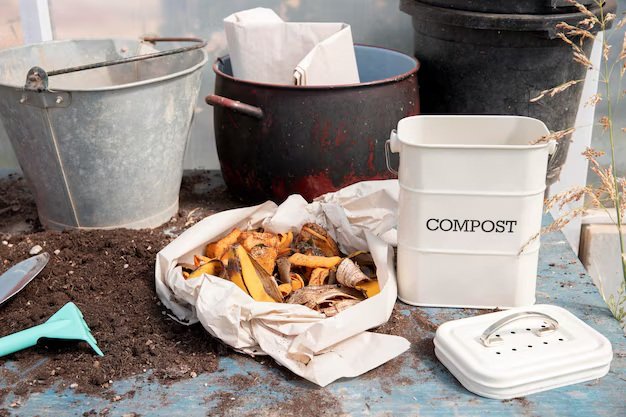12 Hanging Plants for Hanging Baskets: Transforming Your Space with Greenery
If you’re like me, you’ve probably found yourself staring at a drab wall or an empty corner and thinking, This space needs something—but what? A few years ago, I faced that exact dilemma in my tiny city apartment. With no garden and barely enough room for a few pieces of furniture, I needed a creative way to bring the calming touch of nature into my home. That’s when I discovered hanging plants.
What started as a solution to a space problem turned into a full-blown passion project. Over the years, I’ve experimented with countless plants, learned from trial and error (and a few drooping disasters), and even had experts share their insights with me. Today, my home is a hanging garden of joy, and I can’t wait to help you create yours.
This guide is packed with personal stories, tips I wish I’d known earlier, and practical advice to help you turn your space—no matter how small—into a lush, green haven.
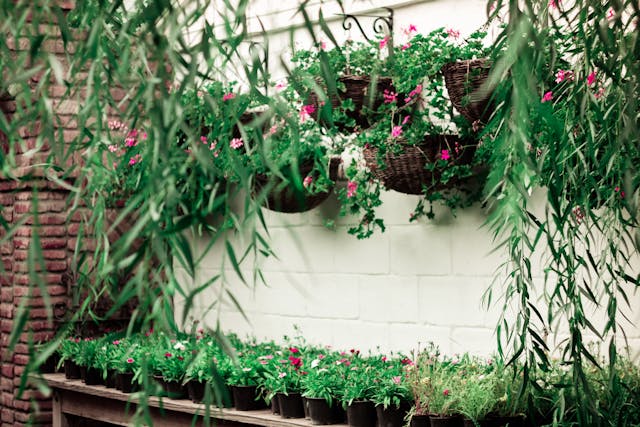
In This Article
- 1. Spider Plant (Chlorophytum comosum)
- #2. Petunias (Petunia spp.)
- 3. Pothos (Epipremnum aureum)
- 4. Boston Fern (Nephrolepis exaltata)
- 5. Strawberries
- 6. Burro’s Tail (Sedum morganianum)
- 7. Calibrachoa (Million Bells)
- 8. String of Pearls (Senecio rowleyanus)
- 9. Fuchsia (Fuchsia spp.)
- 10. Trailing Geraniums
- 11. Tomato (Tumbling Tom)
- 12. Lobelia (Lobelia erinus)
- 13. Sweet Potato Vine (Ipomoea batatas)
- 14. Purple Spiderwort
- Care and Maintenance of Hanging Plants
Why Hanging Plants?
Hanging plants hold a special place in my heart for several reasons. Here are just a few:
- Space Efficiency: I live in a small apartment, and adding plants on shelves or tables wasn’t an option. Hanging plants saved the day. They bring greenery to areas I would have overlooked otherwise, from the top of cabinets to the corners of the living room.
- Visual Appeal: There’s something undeniably charming about trailing vines or cascading blooms from a hanging basket. They add layers of depth to your space and can make even the most ordinary room feel like an oasis.
- Air Quality: I started incorporating plants for the aesthetic, but I soon realised they were purifying the air too. Spider plants, for example, have been shown to absorb carbon monoxide, formaldehyde, and benzene, improving the overall quality of the air in my home.
- A Sense of Calm: There’s a calming effect that comes with caring for plants. As my collection of hanging plants grew, so did my sense of peace and well-being. The process of tending to them—watering, pruning, and just watching them grow—became my meditation, my way of unwinding after a long day.
- Connection to Nature: Living in an urban environment, it’s easy to feel disconnected from the natural world. Hanging plants brought that nature back into my home, making the city feel a little less chaotic and a little more serene.
My First Hanging Basket
I’ll be honest—my first attempt at hanging plants wasn’t a success. When I moved into my first apartment, the space was small, and the natural light wasn’t ideal. I wanted plants, but I knew they needed more care than I’d ever given before. I didn’t even know the difference between succulents and ferns at the time.
I decided to get a pothos—easy enough, right? It’s a low-maintenance plant, often recommended for beginners. I placed it in a hanging basket in a window that got a little light and watered it without really paying attention to how often. The result? A sad, yellowing vine that barely grew. I thought I was doing everything right, but I quickly learned that even the most forgiving plants need a bit more attention.
After much trial and error, I started to research. I began learning about the needs of plants—light, water, and the environment they thrive in. It was in these early mistakes that I learned some of the most valuable lessons I still apply today.
The 12 Best Hanging Plants for Beginners and Experts Alike
There are many plants out there that thrive in hanging baskets, but here are my personal favourites, all of which have withstood the test of time in my home. Each one has a unique beauty, and I’ve also included my best care tips and stories along the way to help you create your own lush hanging garden.
1. Spider Plant (Chlorophytum comosum)
Spider plants were one of the first plants I added to my collection, and they’ve been with me through thick and thin. These are incredibly forgiving and perfect for beginners. Their ability to produce “pups” (small offshoots) makes them endlessly rewarding. I remember the first time I saw those tiny offshoots forming—my excitement was off the charts.
My Story:
When I first got a spider plant, I was clueless about propagation. One day, I noticed tiny offshoots dangling like little ornaments. A friend told me I could snip and pot them, and soon, I was giving baby spider plants as gifts.
Care Tips:
- Light: Bright, indirect light.
- Water: Keep the soil slightly moist but allow it to dry out between waterings.
- Bonus: These are fantastic air purifiers, making them perfect for bedrooms or offices.
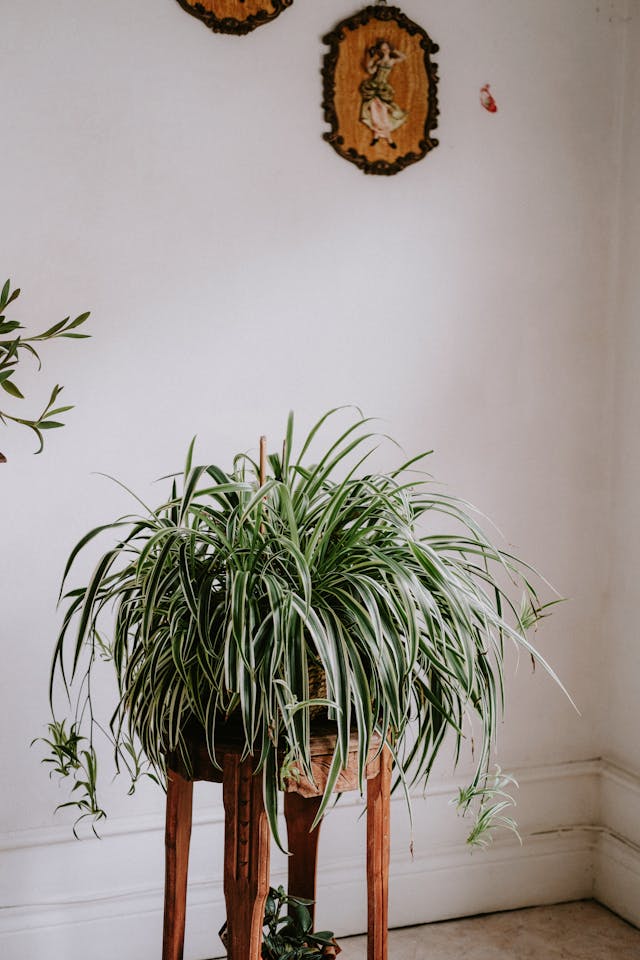
#2. Petunias (Petunia spp.)
Petunias are showstoppers, with their vibrant blooms tumbling over the edges of baskets. They’re perfect for outdoor spaces like patios and balconies. Petunias are perfect for hanging baskets that need a burst of colour. I remember planting petunias for the first time, and they were my most loved plants by guests. Their vibrant petals seem to explode from the basket, creating a lively scene wherever you place them.
Lesson Learned:
The first time I planted petunias, I didn’t pinch back the leggy growth. By midsummer, my basket looked sparse and uneven. Now I regularly trim them to keep them bushy and full.
Care Tips:
- Light: Full sun.
- Water: Keep the soil consistently moist.
- Pair with: Ivy for a lush, cascading look.
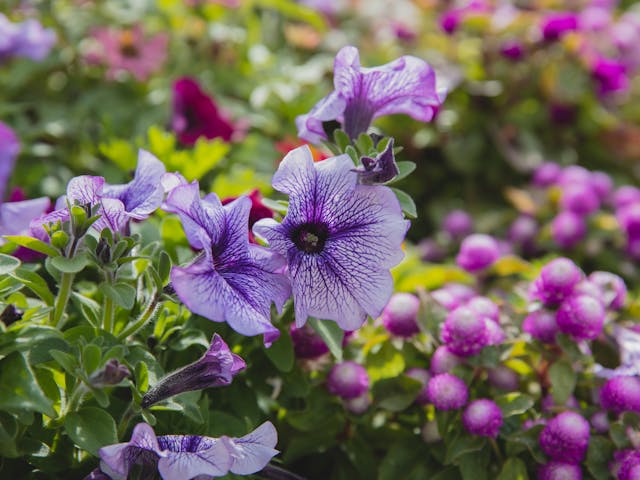
3. Pothos (Epipremnum aureum)
Pothos is practically indestructible. I placed my first pothos in a dimly lit corner and thought it was doomed. Fast-forward a few months, and it was thriving, its vines trailing beautifully. Since then, I’ve had several pothos plants in my apartment. They’re adaptable, grow quickly, and look fantastic no matter where you put them.
My Story:
This plant survived my overwatering phase, my under-watering phase, and even a week in a poorly lit corner. It’s the ultimate beginner-friendly option.
Care Tips:
- Light: Low to bright, indirect light.
- Water: Let the soil dry out between waterings.
- Bonus: Its trailing vines can grow up to 10 feet long, making it perfect for dramatic displays.
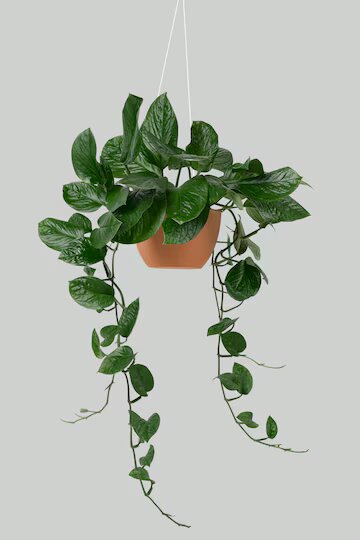
Learn More: 10 Outdoor Plants That Are Good for the Environment
4. Boston Fern (Nephrolepis exaltata)
When I first tried to grow a Boston fern, I thought I could get away with a simple watering routine. I was wrong. Boston ferns need a lot of moisture and humidity. After a few setbacks (and some drooping fronds), I moved my ferns to the bathroom, where the humidity is naturally higher, and they flourished.
Care Tips:
- Light: Indirect sunlight.
- Water: Keep the soil consistently moist.
- Bonus: Mist regularly to mimic its tropical origins.
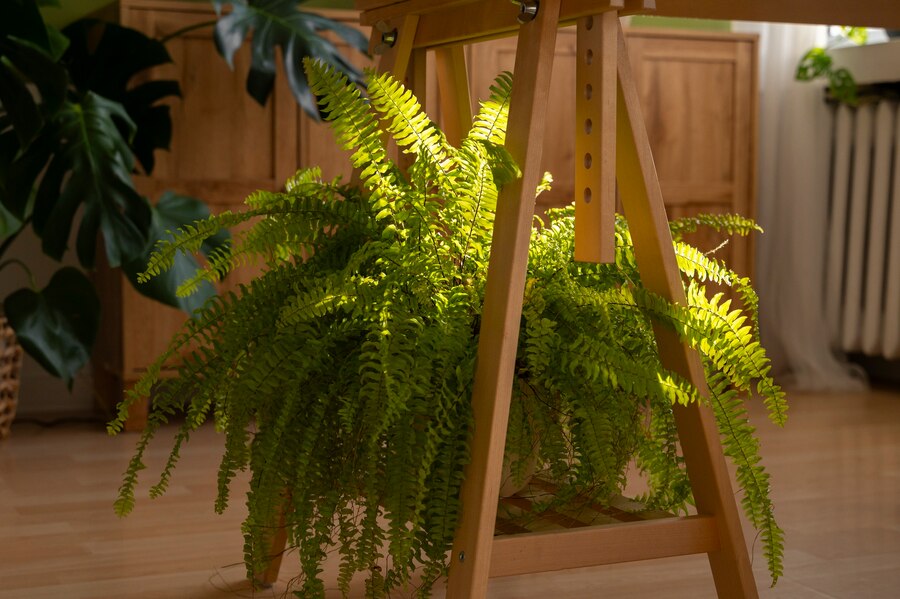
5. Strawberries
Yes, you can grow strawberries in hanging baskets! They’re as beautiful as they are functional, with their cascading vines and bright red fruits.
Favourite Memory:
One summer, I grew strawberries in a basket near my kitchen window. My nephew loved plucking the fruit straight from the vine—it was the highlight of his visits.
Care Tips:
- Light: Full sun.
- Water: Water consistently and ensure good drainage.
- Tip: Fertilise monthly to encourage fruiting.

6. Burro’s Tail (Sedum morganianum)
This trailing succulent is a show-stopper with its plump, bead-like leaves. It’s ideal for indoor spaces with plenty of light. I placed my first burro’s tail on a shelf in the kitchen, and it quickly became my favourite succulent. It’s a low-maintenance plant, perfect for those who travel often or have a busy schedule. This plant can go weeks without being watered.
Care Tips:
- Light: Bright, indirect light.
- Water: Allow the soil to dry completely between waterings.
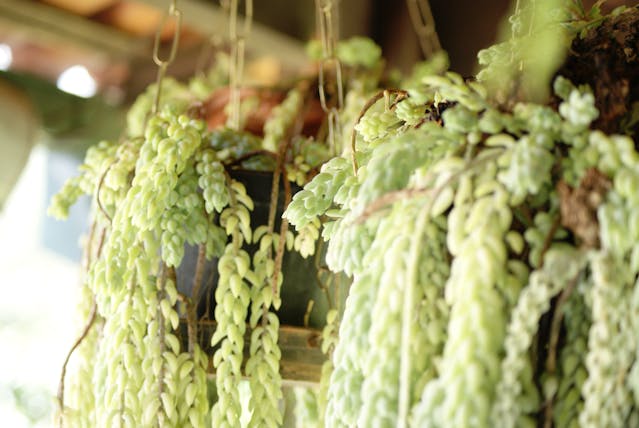
7. Calibrachoa (Million Bells)
Calibrachoa is often called “million bells” because of its profusion of tiny, colourful flowers. I’ve used these in outdoor baskets, and they have the most beautiful, cascading flowers that never fail to brighten a space.
Care Tips:
- Light: Full sun.
- Water: Keep the soil moist but well-drained.
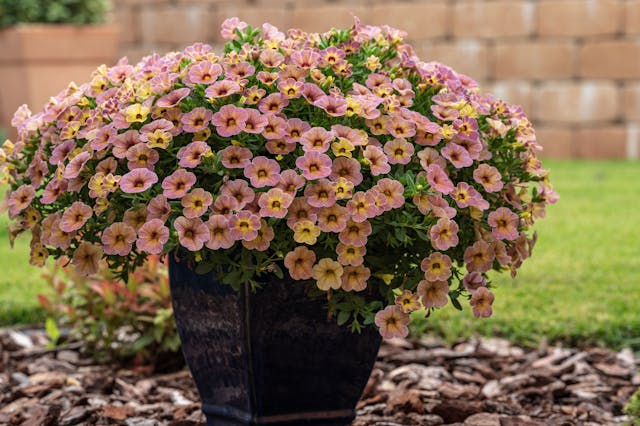
8. String of Pearls (Senecio rowleyanus)
This unique succulent became a favourite of mine when I saw it hanging in a friend’s house. The beads look like little green pearls and cascade in the most beautiful way. At first, I was concerned about watering it too much, but once I got the hang of it, the plant was a true showstopper.
My Tip:
String of pearls needs consistency. I learned the hard way that erratic watering can cause its delicate “pearls” to shrivel.
Care Tips:
- Light: Bright, indirect light.
- Water: Water sparingly; this plant is drought-tolerant.
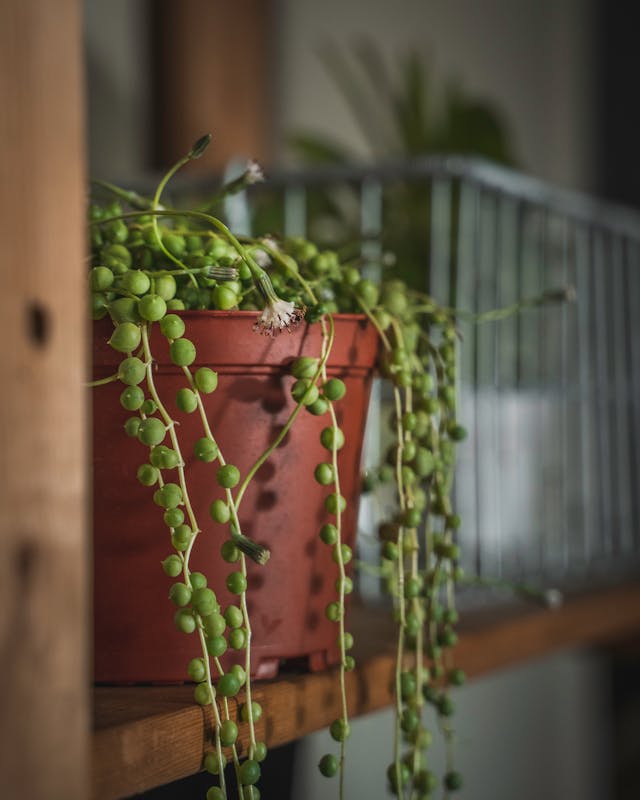
9. Fuchsia (Fuchsia spp.)
If you’re looking for something that blooms in vibrant colours, fuchsias are an excellent choice. I love the mix of pink, purple, and white flowers hanging from their delicate stems. The first time I saw one blooming, I couldn’t stop admiring the beauty.
Story:
My grandmother loved fuchsias and had them in every colour imaginable. She called them her “dancing fairies,” and every time I see one, I think of her.
Care Tips:
- Light: Morning sun, afternoon shade.
- Water: Keep the soil consistently moist.
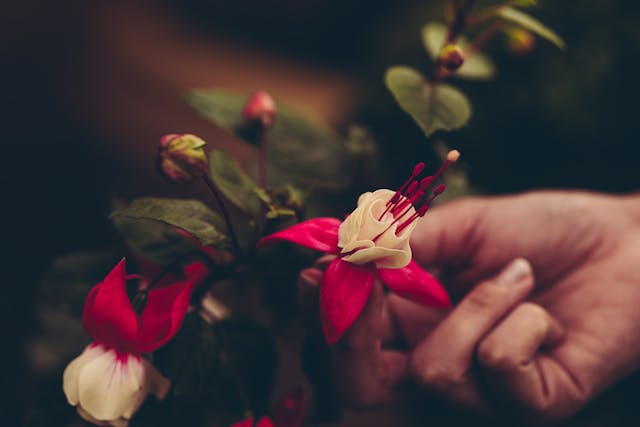
10. Trailing Geraniums
When I think of geraniums, I think of my grandmother’s house. She had hanging baskets of geraniums all over her porch, and they were always the focal point of summer gatherings. They’re vibrant, easy to care for, and make any space feel cosy.
Care Tips:
- Light: Full sun.
- Water: Allow the soil to dry slightly between waterings.
- Bonus: Geraniums love being deadheaded regularly to encourage more blooms.
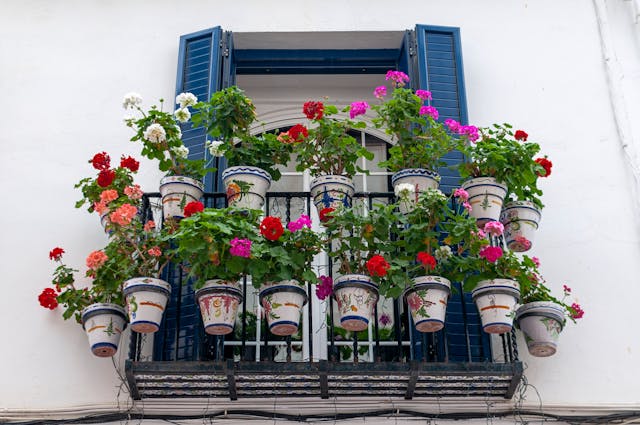
Learn More: 10 Benefits of Gardening to the Environment and Why You Should Get Involved
11. Tomato (Tumbling Tom)
A hanging basket of cherry tomatoes is as practical as it is beautiful. I was sceptical when I first heard you could grow tomatoes in hanging baskets. But I tried it, and it worked! The “Tumbling Tom” variety is small, sweet, and perfect for baskets. I loved picking fresh tomatoes right from the vine.
Care Tips:
- Light: Full sun.
- Water: Keep the soil consistently moist.
- Pro Tip: Use a good quality compost to encourage healthy growth.

12. Lobelia (Lobelia erinus)
A Truly Cascading Beauty:
I first fell in love with lobelia during a visit to a botanical garden. The deep blue flowers are perfect for hanging baskets, where they can cascade down and fill the space with colour. These plants thrive in hanging baskets and make a perfect addition to any garden.
Care Tips:
- Light: Full sun to partial shade.
- Water: Keep the soil moist, especially during hot weather.
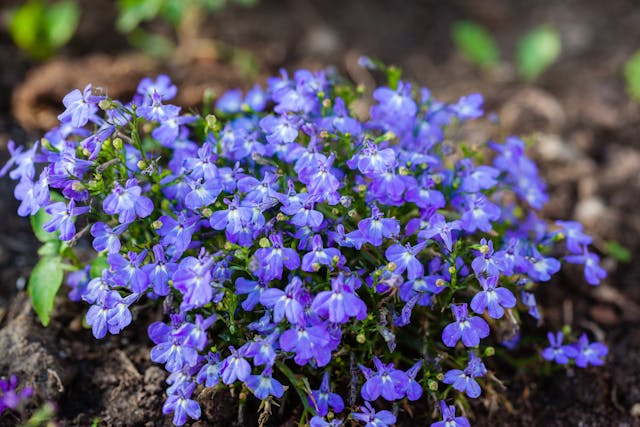
13. Sweet Potato Vine (Ipomoea batatas)
Why It’s a Showstopper:
I’ll admit it—I was a little hesitant to put sweet potato vine in my hanging baskets at first. But after seeing the vibrant green and purple foliage spill over the sides of the basket, I was hooked. It’s the perfect choice for adding a dramatic, trailing effect.
Care Tips:
- Light: Full sun.
- Water: Keep the soil moist but not soggy.
- Bonus: Sweet potato vines are heat-tolerant and do well in hot climates.
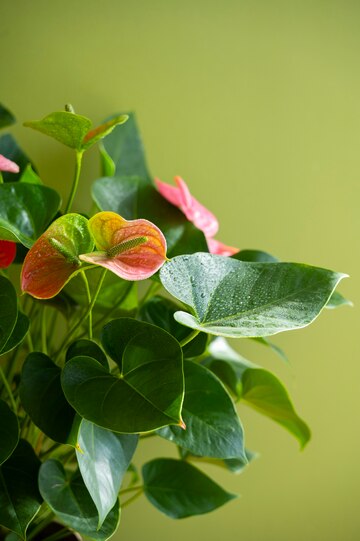
14. Purple Spiderwort
This fast-growing plant with deep purple foliage adds a dramatic flair to any hanging display.
Design Idea:
Pair it with white calibrachoa for a striking colour contrast.
Care Tips:
- Water: Allow the soil to dry slightly between waterings.
- Light: Partial shade.
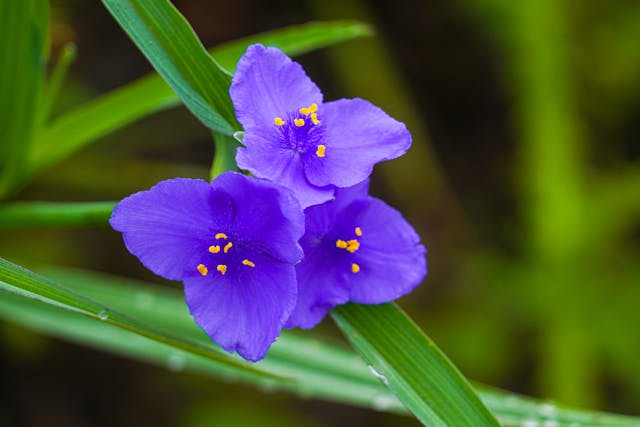
Learn More: 11 Fast-Growing Trees for Shade at Home
Expert Tips for Thriving Hanging Baskets
I reached out to horticulturist Sarah Martinez for her advice. Here’s what she shared:
- Choose the Right Container:
Use baskets with good drainage. Coconut coir liners are eco-friendly and help retain moisture. - Soil Matters:
A lightweight, well-draining potting mix works best. Consider adding slow-release fertiliser to keep your plants healthy. - Water Smartly:
Hanging plants dry out faster than potted ones. Check them daily, especially in summer. - Rotate Regularly:
If your basket is indoors, rotate it weekly to ensure even light exposure.
Care and Maintenance of Hanging Plants
| Plant Name | Light | Watering Needs | Fun Fact |
|---|---|---|---|
| Spider Plant | Bright, indirect | Excellent for colourful blooms in baskets | Known for its air-purifying qualities |
| Pothos | Low to bright, indirect | Water when top soil is dry | Perfect for bathrooms |
| Boston Fern | Bright, indirect | Keep soil moist | Thrives in humid environments |
| String of Pearls | Bright, indirect | Water when soil is dry | Beautiful trailing succulent |
| Fuchsia | Bright, indirect | Keep moist | Colourful, vibrant flowers all season |
| Petunia | Full sun | Water when dry | Let the soil dry out |
| Burro’s Tail | Bright, indirect | Let soil dry out | Great for beginners, very low maintenance |
| Calibrachoa | Full sun | Water regularly | Blooms profusely all season |
| Geraniums | Full sun | Allow soil to dry | Classic summer flower |
| Tumbling Tom Tomato | Full sun | Keep moist | Fresh, sweet tomatoes right at hand |
| Lobelia | Full sun to part shade | Keep moist | Cascading blue flowers |
| Sweet Potato Vine | Full sun | Keep moist | Beautiful, vibrant foliage |
Conclusion:
Adding hanging plants to your home or garden is one of the simplest ways to create a more inviting, greener environment. Whether you’re drawn to the cascading vines of pothos or the vibrant colours of petunias, these plants can be a source of joy and pride. I’ve been lucky enough to experience the growth of these plants in my own home, and I can’t recommend them enough for anyone looking to add a bit of nature to their space.
Every plant tells a story, and each one has its own unique needs. The key to success, I’ve found, is patience and observation. As you nurture your hanging plants, you’ll not only create a beautiful environment but also gain a deeper connection to nature and the world around you.
Resources:
- McIntosh, J. (2024, August 21). 32 Best flowers for hanging Baskets. The Spruce.
- Hanging baskets / RHS. (n.d.). Royal Horticultural Society.
- Toscano, K. (2023, July 26). The best plants for hanging baskets. Southern Living.

